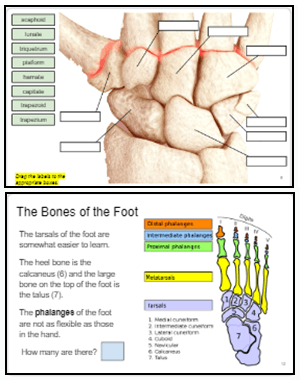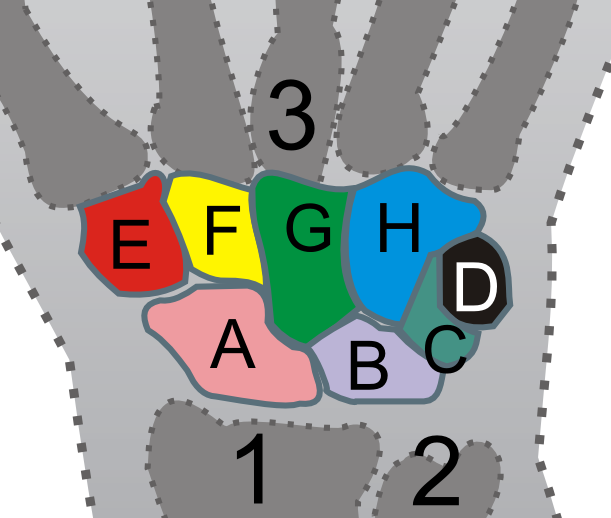
This module walks students through the skeletal anatomy of the hand and the foot by using Google Slides. I designed this for honors anatomy students as guided learning activity that they could do on their own.
Each slide has an image and a task to complete, such as “count the number of phalanges in the hand.” The tasks help students take a closer look at the diagrams and not just flip through the slides.
The main goal is for students to learn the names of the bones. In the hand, the carpals can be challenging to learn. Students use a simple mnemonic technique to help them remember the location and names of each carpal.
“So Long to Pinky, Here Comes The Thumb”
… scaphoid, lunate, triquetrum, pisiform, hamate, capitate, trapezoid, trapezium
(The one I learned in college was “Some lovers try positions that they can’t handle,” but I think that might be a little inappropriate for high school. )

A = Scaphoid
B = Lunate
C = Triquetrum
D = Pisiform
H = Hamate
G = Capitate
F = Trapezoid
E = Trapezium
After examining the slides, students then practice labeling the hand bones by dragging labels to the image. For a challenge slide, the hand is reversed. The mnemonic still works, but you will need to go the opposite direction. The quiz I give students is even more challenging, with the hand pointed down instead of up. The trick is to start with the scaphoid. Once you find that scaphoid location, you just need to work your way around.
The next section follows the same guidelines but with the bones of the foot. This section also emphases the ankle joint with a focus on how the tibia and fibula articulate with the talus and calcaneus.
For more practice, students can complete “Color the Bones of the Hand” and “Color the Bones of the Foot.” I have several bone models in the class for students to examine as well.
Answer keys and a student quiz are bundled together with these resources at Teachers Pay Teachers.

